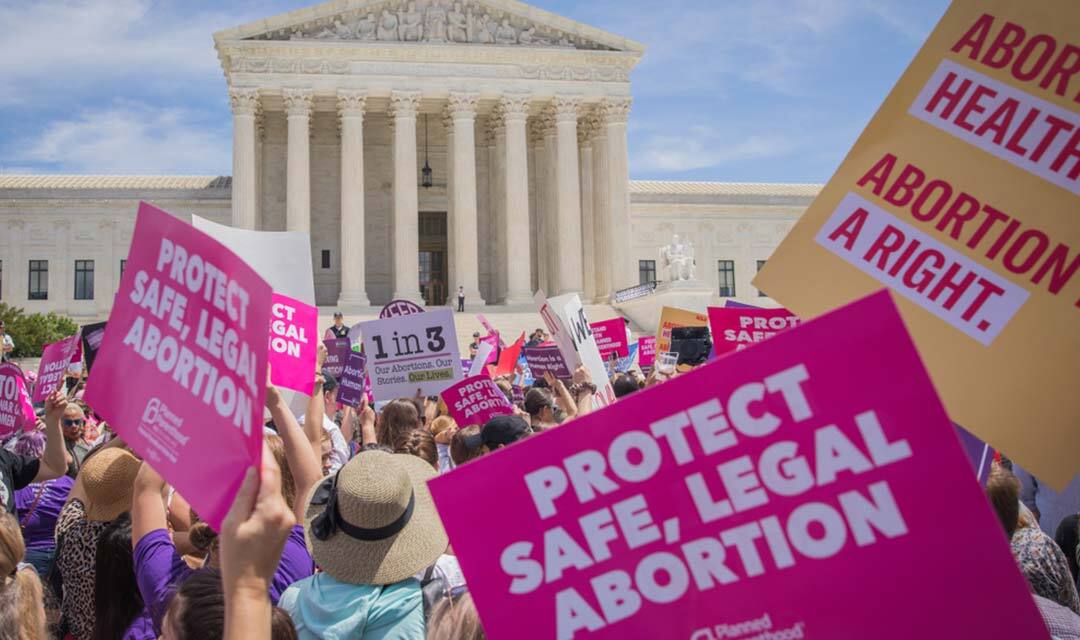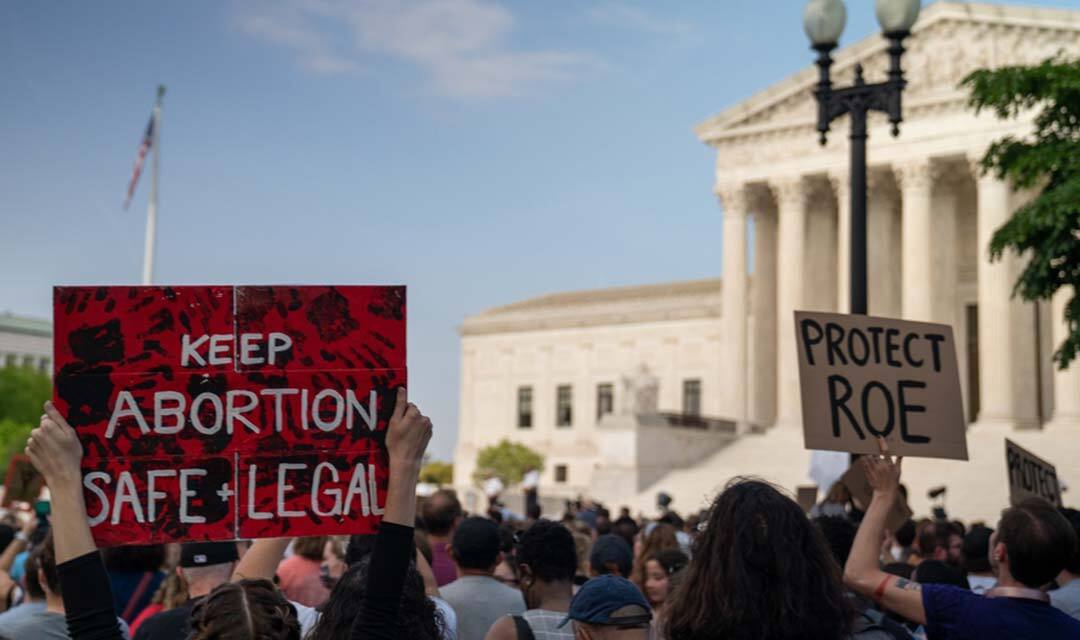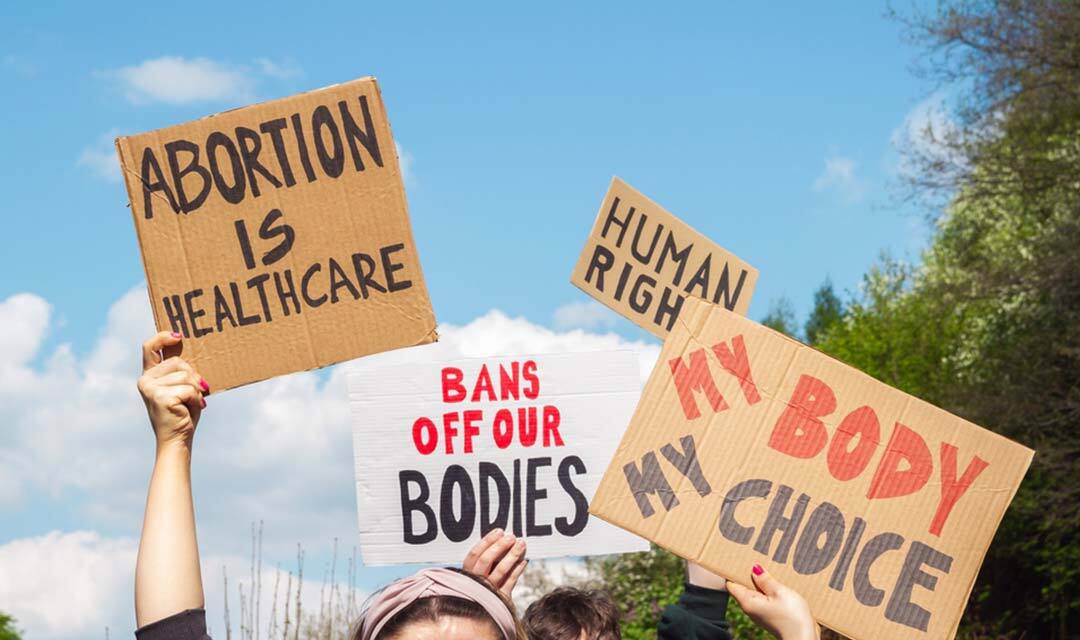A Nation Reacts to Abortion Rights Rollbacks, Prepares for What’s Next
In a move that was forecast by a leak, the Supreme Court overturned 50 years of precedent with the repeal of Roe v Wade last month. The 5-4 ruling was one of several highly partisan decisions rendered by the conservative majority in the span of a couple weeks, including: gutting gun control and allowing for students to be coerced into practicing religion at school, along with this ruling to turn abortion rights over to the states.
The decision was immediately decried by many, including lawyers, professional medical and mental health organizations, as well as civilian protesters across the country and around the world. Representative Alexandria Ocasio-Cortez called for an impeachment of the recently appointed justices who voted in the majority on the Dobbs v Jackson Womens Health decision, even though they had claimed in their confirmation hearings that Roe v Wade was “settled law.”
A Battlefield State: Pennsylvania Reacts
In Philly, thousands of protesters gathered outside City Hall in the wake of the ruling, continuing their activism through 4th of July weekend. Abortion rights advocates and city officials spoke out about the immediate impacts, as well as the looming consequences for Pennsylvania, which has become a battlefield on the issue, though abortion currently remains legal in the state.
Governor Tom Wolf tweeted in opposition to the Dobbs ruling, vowing to protect abortion access in Pennsylvania. Democratic Senator Bob Casey released a statement that warned, “This dangerous ruling won’t end abortions in this country, but it will put women’s lives at risk. And make no mistake—this is not the end goal, it’s just the beginning.”
Republican Senator Pat Toomey celebrated the decision, comparing it to the overturning of Plessy V Fergsuson, as it turns abortion rights back to the states. This states’ rights argument was notably the tactic used to maintain slavery and racial segregation laws and to restrain voting rights.
The Pennsylvania Commissions for Women, African American, Latino, LGBTQ+, and Asian Pacific American Affairs jointly released a statement that decried “the draconian decision.” In the statements released to the press, Dr. Damary Bonilla-Rodriguez of the Governor’s Advisory Commission on Latino Affairs said: “As it is, there aren’t enough resources to support women in making educated decisions relating to their bodies and when women do make decisions, they’re shamed. This decision is a selfish ploy to regain political control; it’s unacceptable to politicize women’s reproductive rights and healthcare options.”
Even before the Dobbs decision, the situation was precarious in Pennsylvania, as this author covered in 2020. While survey data finds the majority of people in the state support abortion rights, the conservative Pennsylvania legislature plans to codify an abortion ban, leaving the rights of millions in the hands of whoever is next elected governor.
State Attorney General Josh Shapiro, the Democratic candidate for Governor, said that while the ruling had no imminent impact on the state, he vowed to “fight any attempt to erode women’s rights in our Commonwealth.” The Republican candidate for Governor, Doug Mastriano, on the other hand, has made banning abortion a focal point of his political career. One of his first actions when elected to the PA state senate in 2019 was an attempt to ban abortion.
Philly Weekly interviewed abortion rights activists around the area about the decision. Elicia Gonzales, head of the Abortion Liberation Fund of PA, told PW’s AD Amorosi: “We have been telling people… that abortion is older than this country,” says Gonzales. “Older than legislatures and courts, abortion has been here since the beginning of time. After last week’s decisions, people will still need abortions and people will still get abortions.”
Melissa Reed of Planned Parenthood Keystone assured readers that they still have access to care in its 8 centers across the state. “Even though there were anti-abortion protestors outside of our clinics, say in York, PA, our people were there providing compassionate care. Everyone who came for, and comes for, an abortion will receive that same care.”
Amanda Knifferly of The Women’s Centers of the Northeast said that providers and activists have been preparing for the repeal of Roe v Wade for years, having seen the continual encroachment on abortion rights over the decades. “If Philadelphia were not able to provide this care, it would be disastrous. The only way to prevent the worse from happening is to replace Republican lawmakers. We need people to vote on election day and stand our ground. Pennsylvanians do not wish to lose their access to bodily autonomy, so we need to protect that. We need to show the nation what it looks like to rally in support of the majority and protect ourselves against these crazy restrictions against our bodies.”
Women’s Rights Vary, State by State
While abortion remains legal in Pennsylvania for now, the SCOTUS ruling overturning Roe V Wade set off a chain reaction in states that had so-called trigger laws. These are bans that were written into state law that would take effect in the event law changed on a federal level, as the Dobba ruling did by overturning Roe v Wade. Many of these trigger bans were written without exceptions for rape, incest or the health of the mother. Already international news has highlighted the case of a 10 year old rape survivor who had to travel across state lines to get an abortion, as she was ineligible in her home state of Ohio.
While political maneuvering may change the stats soon, as of this writing: abortion remains legal for now in 35 states, and is illegal or about to be in 16. It is estimated by the Guttmacher Institute that 26 states will move to ban the procedure in the aftermath of the Dobbs decision.
Not all states are geographically or demographically the same, so the impact will hit people unequally. Many in the southern US will need to traverse across multiple state lines, drive or fly many hours, in a trip potentially requiring several days. The poorest citizens, who are unable to take off work or afford travel and childcare, will have the hardest time accessing abortion. Rising prices on gasoline and air travel will exacerbate this issue. Those with higher incomes, access to health insurance, and who live in urban areas will have an easier time finding a nearby clinic. Abortion seekers everywhere will be affected though, as people traveling for care will likely flood the remaining clinics, making it harder to get appointments.
Can one state determine what is legally allowed to happen in another state? The Justice Department says it will uphold the right for people to travel across state lines to get abortions, but Republican-controlled state legislatures are already trying to circumvent that. Some red states are moving to criminalize any action that assists in accessing abortion, including giving information about their availability or providing transportation. These laws would deputize any random person to sue any other person for assisting in abortion access, though New York and California are drafting their own laws in response, as well as to prevent extradition. It’s unclear how the Interstate Commerce Clause, which says Congress is in charge of what trade is allowed to happen across state lines, could be used in this situation.
One option will be medication abortions: a combination of mifepristone and misoprostol, a treatment which has been available for two decades and now accounts for half of the abortions in the country. This method is considered very safe and effective and is currently FDA approved for pregnancies up to 10 weeks, although it has been shown to safely work later. State bans on medical abortions are popping up, though, including laws that prohibit mailing the pills to residents of the state. Not all people who need abortions are aware of the option of abortion pills, though, or will be able to find them in time.
Whose Lives are Worth Protecting?
What will be the impact? Mostly, it appears the bans will endanger pregnant people, bog down the already overloaded public health system, and make life much more costly for all of us.
First, these bans won’t reduce the rates of abortion. International research has shown that making abortion illegal doesn’t reduce the incidence of the procedure; people who need abortions still seek them. According to a 2017 report on abortion worldwide, “During the same period, abortions happened roughly as frequently in the most restrictive countries as they did in the least restrictive: 37 versus 34 abortions each year for every 1,000 women aged 15 to 44.”
The report also explains that abortion rates in general have declined over the last 25 years, which can be attributed to improved sexuality education and birth control access. Abortion has also become safer over the decades, although laws that restrict access will make the procedure riskier, as people will have to postpone treatment or will seek out unsafe methods.
In general, carrying a pregnancy to term is far more medically dangerous than abortion. A person who carries to term and gives birth is 14 times more likely to die as a result than a person seeking an abortion. When legally available, 90 percent of abortions happen within the first 12 weeks of pregnancy and complications are extremely rare. Abortions sought later in pregnancy are usually due to medical concerns and often expressly to protect the health of the pregnant person.
Giving birth is increasingly risky in America. While maternal death rates have gone down in most of the world, the rate of women who die because of or during childbirth has risen in the US – landing the country at 46th in the world, the highest rate of any developed country.
Studies looking at the United States specifically have found that states that have had more restrictive abortion laws also have higher maternal death rates. The probability of dying from giving birth is already 2-3 times higher in the states like Arkansas, Kentucky, Alabama, Tennessee, Louisiana and Mississippi, which are all states that had implemented trigger laws. These death risks are not carried evenly across Americans. A 2021 study stated found “wide racial disparities in maternal death persist, with non-Hispanic Black women being more than 2 to 3 times more likely to die from a pregnancy-related complication than non-Hispanic White women. Furthermore, research shows that more than 60% of maternal deaths are preventable.”
Pregnant women are not only at risk from pregnancy, but also face increased risk of violence. The number one cause of death in pregnant women in America is homicide. Tragically, researchers have found that “between the ages of 10 and 44 years, women who are pregnant or had their pregnancy end in the past year are killed at a rate 16% higher than are women who are not pregnant.”
And there are other risks to the pregnant person. “For every maternal death, there are 75 to 100 more women who suffer a life-threatening complication during pregnancy or childbirth,” according to Dr. Michael C. Lu, associate administrator of the U.S. Department of Health and Human Services’ Health Resources and Services Administration.
A Disaster for Public Health and the Economy
Banning abortion will undoubtedly lead to births that otherwise would have been prevented, although research suggests it’ll be more complicated than simply having more babies. What most evidence suggests it that wealthy people will continue to have abortions, but poor people will have children at times that adversely impact their lives, delaying education and reducing earning potential for years afterwards.
Statistically, most abortion seekers are already mothers who decide against having another child. If denied abortion, they are very unlikely to give up the child for child for adoption. Being denied an abortion won’t suddenly give them access to greater financial stability, more free time or other resources. Having a child, even if it’s just through the birth process, is extremely expensive.
Those costs add up. Research finds that people are denied an abortion have more financial problems, are more likely to be evicted, less able to achieve their education and career aspirations, and have lower self-esteem and life satisfaction. The outcomes for their existing children are also worse, as their parents’ resources are stretched even thinner.
While the negative outcomes are significantly greater for people who are pregnant, there will be repercussions for their partners as well. Data from the National Survey of Family Growth finds that 1 in 5 men have impregnated someone who then had an abortion. Researchers suggests that figure is probably an underestimate, as many men may be unaware that a partner terminated a pregnancy. Young men benefit greatly from abortion, as studies have found that those whose partners were able to access abortion were 4 times more likely to finish college and had higher rates of earnings.
Being able to time a birth has a big impact on not only these personal outcomes, but also whether someone has children later. The landmark Turnaway Study examined outcomes for people who were able to get abortions versus those were denied. Researchers found that being able to get an abortion for an unwanted pregnancy made it much likelier that someone would have a child later, when they were better prepared to support them. Banning abortion simply means more parents having children when they’re not ready.
America is looking at an increase in number of kids, but no commensurate safety net to provide for them. The states that have the most restrictive abortion laws are also the ones with the lowest spending on public health care and education. Texas, for instance, opted not to expand Medicaid under the Affordable Care Act, the state Senate voted not to expand postpartum Medicaid coverage, and more than a quarter of the women of childbearing age in the state are uninsured.
It’s worth noting Republican legislators, who most ardently advocated for these abortion bans, have also opposed funding for public health, mandatory paid parental leave, and many other provisions. As recently as June, Republicans recently moved to end the pandemic-era universal free school lunch program for kids.
What Next? A Domino Effect of Falling Civil Rights
Aside from the impacts for those who have unwanted pregnancies, Dobbs will have consequences across American culture: for workers, LGBTQ people, and everyone else.
As the decision overturned 50 years of reproductive freedom, it opened the door to the revocation of a variety of hard-won rights for Americans. Supreme Court Justice Alito’s wording in the final ruling ended up being more extreme than the leaked draft and centers on a counterfactual understanding of the history of abortion and the argument that the Constitution grants no right to privacy.
Legal scholars have pointed out, if the 14th Amendment is now up for debate, every liberty established since the 19th century is up for grabs. They point out that Alito is technically correct in that the Constitution does not mention abortion, but it also doesn’t mention pregnancy or women at all. It also expressly excludes people from the First Nations, as well as Black and Jewish people. The Constitution does, however, enshrine bodily autonomy and prohibit involuntary servitude in the 13th Amendment, which is incompatible with the idea of forcing someone to be pregnant and give birth.
And this action is likely not the end of activism by the current Roberts court, which was designed by the Republican party for this very moment. In his concurring opinion on the Dobbs ruling, Justice Thomas suggested other rights like contraception access and same-sex marriage should be revisited as well. The ruling has already been used as supportive evidence for banning gender affirming care in Alabama.
What Can Be Done?
In reaction to the Dobbs ruling, a growing number of companies have declared that they will cover expenses for employees who need to travel out of state for an abortion, much to the chagrin of Republican lawmakers. While these statements are clearly supportive of abortion access and might benefit those who work for the corporation, it leaves out most low income workers- the folks who need help most. This dynamic will also further entangle health care access and employment, making workers even more reliant upon their jobs to survive. Privacy experts also have expressed concerns about whether people it is safe to share personal medical data of this nature with their employers.
A more sustainable solution is to enshrine abortion rights in federal law, as the proposed Womens Health Protection Act would do. The nation’s largest union of nurses has called upon Congress to pass the bill, but it languishes due to Republican opposition and the ineptitude of the Democrats who have accomplished little, but used the Dobbs decision as an opportunity for fundraising.
The most useful thing for the average person to do is donate to abortion funds, find practical support organizations, give to independent clinics, share information on where abortions are available and other resources. Organizers have compiled online lists of resources and links for further reading.
Activists still suggest it’s still worth the trouble of calling representatives and voting, especially in state elections. In Kansas, voters will have the opportunity to directly respond to a proposed ban, while here in Pennsylvania the governor’s race will ultimately be a referendum on abortion rights. Further, citizens can encourage prosecutors to refuse to go after abortion seekers and providers.
And perhaps most importantly for individuals, we resist the urge to give up. In the words of the Mariame Kaba: “Let this radicalize you rather than lead you to despair.”







